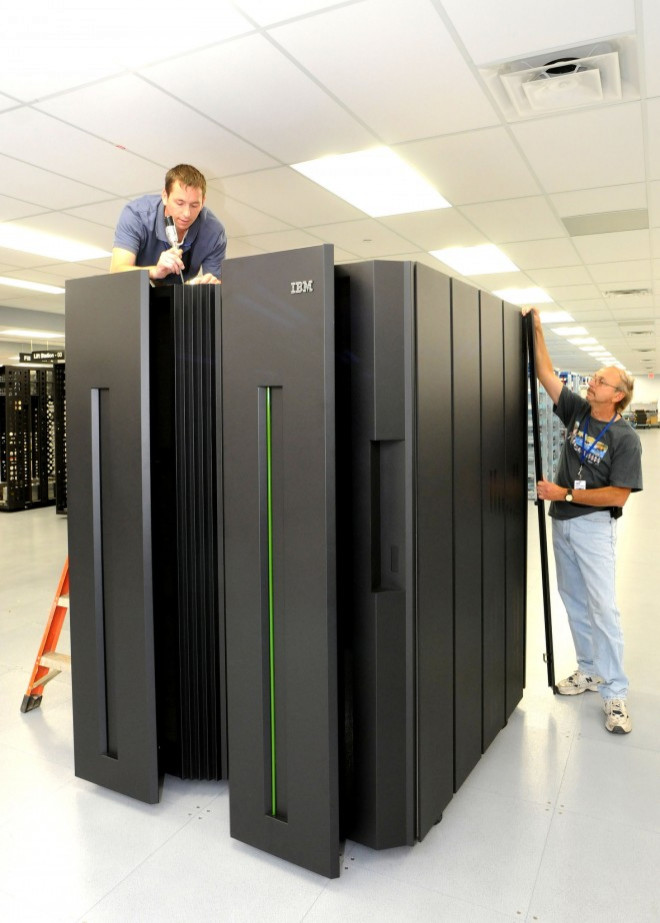Technology Focus: Welcome To Era of ‘Big Data’

The new investor bywords are big data. Initial public offerings last week for both Splunk (Nasdaq: SPLK) and Proofpoint (Nasdaq: PFPT) were smash hits because of it.
Established companies like International Business Machines Corp. (NYSE: IBM) and Microsoft (Nasdaq: MSFT), the world's biggest software company, reported better-than-expected quarterly reports because enterprises ordered more servers and software.
Last month, two other giants, Hewlett-Packard Co. (NYSE: HPQ) and Oracle (Nasdaq: ORCL), did the same.
Clearly, the era of big data has arrived. Market researchers at Gartner previously forecast this year's data flow would rise 48 percent to 2.7 zettabytes, an almost unbelievable figure, from 2011.
A zettabyte is 10 to the 21st power. By comparison, a terabyte, or a trillion bytes of data, is 10 to the 12th power.
Our data center model is going to have to change, said IBM's chief information officer, Jeanette Horan, in an interview last week. Not only does the No. 2 computer maker support six gigantic centers for itself; it's also running 100 small centers and hundreds of sites for customers.
Besides handling all the data, storage capacity increases 25 percent annually, Horan said. Fortunately, 80 percent of that can be handled by virtualization, or creating a copy, or virtual computer that can run parallel applications.
Still, the IBM CIO said, her biggest problems remain the server under the desk, where 344,000 IBM employees have data that can be transmitted in some form.
Now think how Apple (Nasdaq: AAPL), the world's most valuable technology company, and Amazon (Nasdaq: AMZN), the No.1 e-retailer, transmit data, whether for iCloud updates, book orders or requests to download movie titles. Here, too, trillions of bytes of data are moving.
Behind the scenes are some other key players, like Cisco Systems (Nasdaq: CSCO), the No. 1 provider of Internet equipment, and AT&T (NYSE: T), the No. 2 U.S. communications provider.
So there really shouldn't be any surprise all these companies are doing well, especially with demand from the corporate and public sector, which needs to handle demand from business and consumers. Slicing, dicing and archiving all this is big work. Big data requires the technology big boys to shoulder the burden (of course, both HP and IBM are now headed by women!).
Business are investing in data centers. They're investing in their desktops because they see technology as a way to really both cut costs and improve their strategic positioning, said Microsoft CFO Peter Klein.
Still, there's more to consider, such as EZ-Pass data from toll plazas, text messages zipping between smartphones and telemetry for military and civilian traffic. All this needs to be transmitted, massaged and stored for future payments, action or even litigation.
The semiconductor industry is playing along. New chips this year from both Intel and Advanced Micro Devices (NYSE: AMD), the No. 2 microprocessor developer, will speed computation yet again. These new chips will also handle communications, as will Snapdragon, the new design from Qualcomm (Nasdaq: QCOM), the biggest designer of mobile chips.
So the only questions really will be if the industry can keep up with it and make it work, then see what big data really means.
Near-term, that ought to spell good news for the enterprise providers, as well as the chipmakers, who collaborate with the chain. International markets are just as advanced: IBM recently handed over a state-of-the art data center to India's Tulip Telecom in Bangalore and is near completion of the world's biggest center, for Range Technology, near Beijing. More are coming soon, said Steve Sams, IBM's VP for sites and facilities services.
Over time, that should mean in the era of Big Data, there'll be no gaps between East and West.
© Copyright IBTimes 2024. All rights reserved.






















